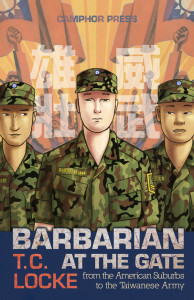Mixed Orthography Taiwanese
This system uses characters where the cognates are known, but for unknown words romanization is used. The romanization is usually POJ, often written without tone markings. This style of mixed-orthography Taiwanese (called Hàn-lô in Taiwanese itself) is probably the most popular system used both on the internet and in printed literature.
A crucial advantage of starting from a base of characters is the accessibility for speakers who can read Mandarin (i.e. the vast majority of Taiwanese speakers). The effort required for native speakers not familiar with romanization in order to read this system is small - anecdotally it seems that many fluent speakers can manage well with no knowledge of the romanization at all.
The obvious disadvantage is that for non-readers of Mandarin it presents another (large) hurdle to learning the language. Chinese characters are complex and a knowledge of thousands is necessary for literacy - something which requires a time investment of several years for newcomers to the language. Characters are fascinating to many people, not to mention beautiful, but they are far from being the most efficient way to write or learn a language.


